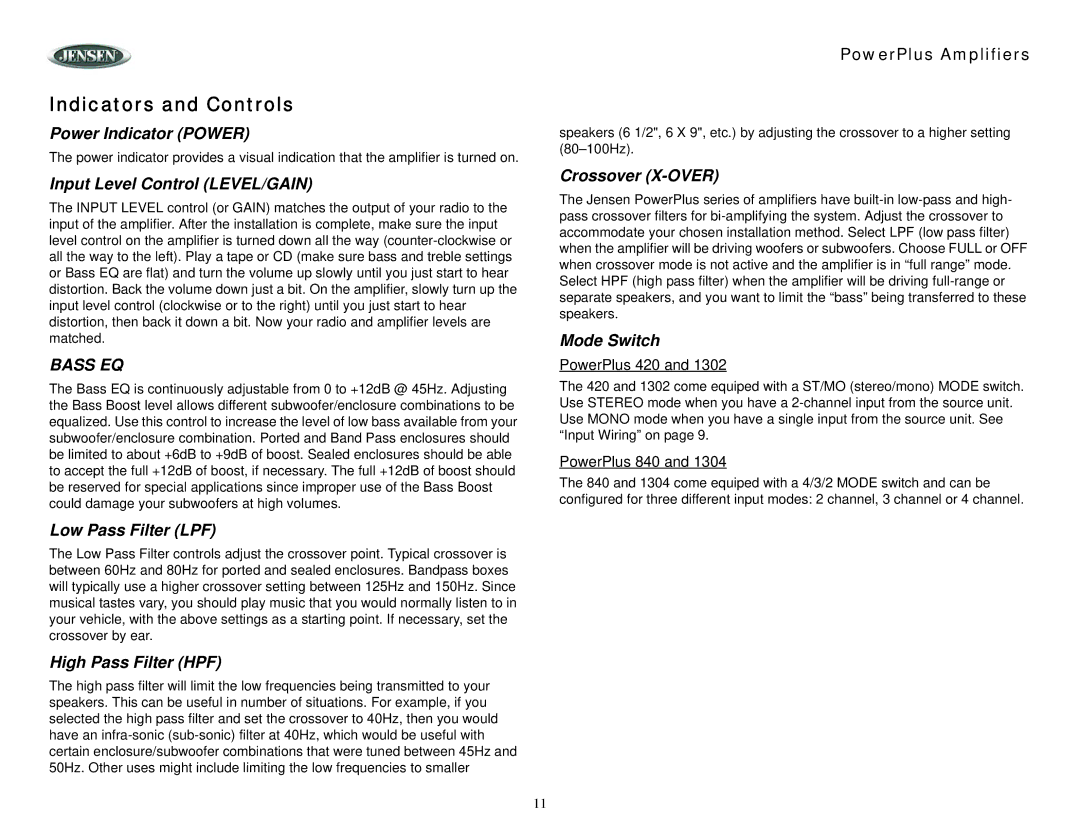Indicators and Controls
Power Indicator (POWER)
The power indicator provides a visual indication that the amplifier is turned on.
Input Level Control (LEVEL/GAIN)
The INPUT LEVEL control (or GAIN) matches the output of your radio to the input of the amplifier. After the installation is complete, make sure the input level control on the amplifier is turned down all the way
BASS EQ
The Bass EQ is continuously adjustable from 0 to +12dB @ 45Hz. Adjusting the Bass Boost level allows different subwoofer/enclosure combinations to be equalized. Use this control to increase the level of low bass available from your subwoofer/enclosure combination. Ported and Band Pass enclosures should be limited to about +6dB to +9dB of boost. Sealed enclosures should be able to accept the full +12dB of boost, if necessary. The full +12dB of boost should be reserved for special applications since improper use of the Bass Boost could damage your subwoofers at high volumes.
PowerPlus Amplifiers
speakers (6 1/2", 6 X 9", etc.) by adjusting the crossover to a higher setting
Crossover (X-OVER)
The Jensen PowerPlus series of amplifiers have
Mode Switch
PowerPlus 420 and 1302
The 420 and 1302 come equiped with a ST/MO (stereo/mono) MODE switch. Use STEREO mode when you have a
PowerPlus 840 and 1304
The 840 and 1304 come equiped with a 4/3/2 MODE switch and can be configured for three different input modes: 2 channel, 3 channel or 4 channel.
Low Pass Filter (LPF)
The Low Pass Filter controls adjust the crossover point. Typical crossover is between 60Hz and 80Hz for ported and sealed enclosures. Bandpass boxes will typically use a higher crossover setting between 125Hz and 150Hz. Since musical tastes vary, you should play music that you would normally listen to in your vehicle, with the above settings as a starting point. If necessary, set the crossover by ear.
High Pass Filter (HPF)
The high pass filter will limit the low frequencies being transmitted to your speakers. This can be useful in number of situations. For example, if you selected the high pass filter and set the crossover to 40Hz, then you would have an
11
